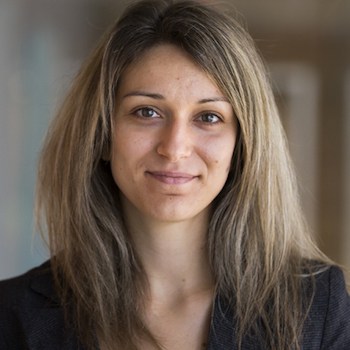Prescribed-time Convergence with Input Constraints: A Control Lyapunov Function Based Approach.
Prescribed-time Convergence with Input Constraints: A Control Lyapunov Function Based Approach.
ACC
@inproceedings{DBLP:conf/amcc/GargAP20,
author = {Kunal Garg and
Ehsan Arabi and
Dimitra Panagou},
title = {Prescribed-time Convergence with Input Constraints: {A} Control Lyapunov
Function Based Approach},
booktitle = {2020 American Control Conference, {ACC} 2020, Denver, CO, USA, July
1-3, 2020},
pages = {962--967},
publisher = {{IEEE}},
year = {2020},
url = {https://doi.org/10.23919/ACC45564.2020.9147641},
doi = {10.23919/ACC45564.2020.9147641},
timestamp = {Sun, 08 Aug 2021 01:40:57 +0200},
biburl = {https://dblp.org/rec/conf/amcc/GargAP20.bib},
bibsource = {dblp computer science bibliography, https://dblp.org}
}Abstract
In this paper, we present a control framework for a general class of control-affine nonlinear systems under spatiotemporal and input constraints. Specifically, the proposed control architecture addresses the problem of reaching a given final set S in a prescribed (user-defined) time with bounded control inputs. To this end, a time transformation technique is utilized to transform the system subject to temporal constraints into an equivalent form without temporal constraints. The transformation is defined so that asymptotic convergence in the transformed time scale results into prescribed-time convergence in the original time scale. To incorporate input constraints, we characterize a set of initial conditions DM such that starting from this set, the closed-loop trajectories reach the set S within the prescribed time. We further show that starting from outside the set DM , the system trajectories reach the set DM in a finite time that depends upon the initial conditions and the control input bounds. We use a novel parameter μ in the controller, that controls the convergence-rate of the closed-loop trajectories and dictates the size of the set DM. Finally, we present a numerical example to showcase the efficacy of our proposed method.
Authors
Bib
@inproceedings{DBLP:conf/amcc/GargAP20,
author = {Kunal Garg and
Ehsan Arabi and
Dimitra Panagou},
title = {Prescribed-time Convergence with Input Constraints: {A} Control Lyapunov
Function Based Approach},
booktitle = {2020 American Control Conference, {ACC} 2020, Denver, CO, USA, July
1-3, 2020},
pages = {962--967},
publisher = {{IEEE}},
year = {2020},
url = {https://doi.org/10.23919/ACC45564.2020.9147641},
doi = {10.23919/ACC45564.2020.9147641},
timestamp = {Sun, 08 Aug 2021 01:40:57 +0200},
biburl = {https://dblp.org/rec/conf/amcc/GargAP20.bib},
bibsource = {dblp computer science bibliography, https://dblp.org}
}
